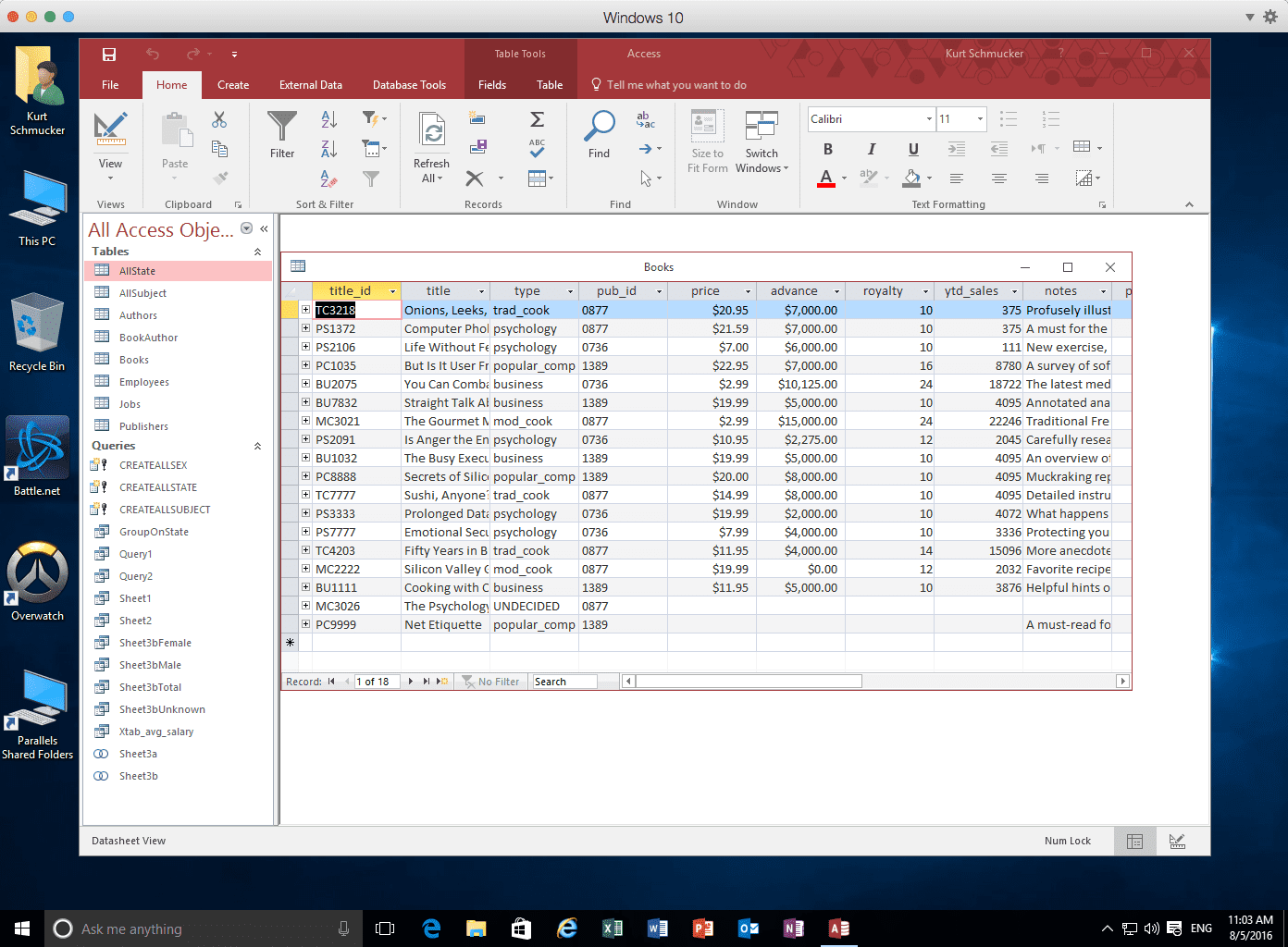

- OFFICE 365 PROFESSIONAL ACCESS DATABASE HELP HOW TO
- OFFICE 365 PROFESSIONAL ACCESS DATABASE HELP INSTALL
- OFFICE 365 PROFESSIONAL ACCESS DATABASE HELP UPDATE
- OFFICE 365 PROFESSIONAL ACCESS DATABASE HELP DRIVER

"Ignore schema in column specifications".In the Metadata tab, check the boxes for:.Database: Enter the name of a database specified in the config file for the daemon.Port: Enter the port that the daemon is listening on.Server: Enter 127.0.0.1 or the address of the machine where the MySQL daemon is running.Provide the following information to complete the wizard:.On the System DSN tab, click Add and select Actual Open Source Databases.Open iODBC by searching in the launchpad.

OFFICE 365 PROFESSIONAL ACCESS DATABASE HELP DRIVER
If you have not already obtained an ODBC driver and driver manager, refer to "Outlining the ESS Setup" to determine the components supported for your platform.įollow the steps below to use the iODBC graphical administrator tool: When working with ODBC data sources, you specify connection properties in a DSN (data source name). $ java -jar -f ".ini"Īfter connecting successfully to Office 365 and starting the MySQL daemon, create a MySQL ODBC data source. The example below uses the included sample configuration file. Start the MySQL daemon by specifying the configuration file or settings on the command line. See the help documentation for more information about the available connection properties and other configuration options for remoting. See the "Getting Started" chapter of the help documentation for a guide to using OAuth. To authenticate requests, you will need to obtain the OAuthClientId, OAuthClientSecret, and OAuthCallbackURL by registering an app with Office 365. Office365 = "OAuthClientId=MyApplicationId OAuthClientSecret=MyAppKey OAuthCallbackURL= Office 365 uses the OAuth authentication standard.
OFFICE 365 PROFESSIONAL ACCESS DATABASE HELP UPDATE
OFFICE 365 PROFESSIONAL ACCESS DATABASE HELP INSTALL
On macOS, you will need to install a driver manager before installing the ODBC driver install the iODBC driver manager. On Windows, the driver manager is built in. On macOS, FileMaker Pro requires the Actual Technologies Open Databases ODBC driver. On Windows, FileMaker Pro requires the official MySQL driver, the MySQL Connector\ODBC (currently, the best option is Connector\ODBC 5.1.13).
OFFICE 365 PROFESSIONAL ACCESS DATABASE HELP HOW TO
This article shows how to link each of the following components with FileMaker Pro: Compared to a native ODBC integration, FileMaker Pro integrations that use MySQL remoting have several additional components. The JDBC driver is part of a data access chain. The remote data can be modified in FileMaker Pro and tables can be used in the relationships graph like standard FileMaker Pro tables. To use this approach, see ODBC Office 365 Integration in FileMaker Pro.ĮSS: Instead of working with a local copy of the data, you can use the JDBC driver to create an external SQL source. To streamline this solution, use the CData ODBC driver, as FileMaker Pro supports ODBC natively, but it does not support JDBC. There are two data access modes in FileMaker Pro:ĭata Import: Office 365 data is copied into a FileMaker Pro database and can be refreshed on demand. The CData JDBC Driver for Office 365 implements both the JDBC and MySQL standards to integrate with applications like FileMaker Pro that support connections to traditional databases like MySQL but not generic JDBC connections. You will use the MySQL Remoting feature to access Office 365 as a remote MySQL database. This article shows how to use the CData JDBC Driver for Office 365 to integrate with the External SQL Sources (ESS) feature in FileMaker Pro, which allows you to link records in FileMaker Pro with related records in your other operational data stores.


 0 kommentar(er)
0 kommentar(er)
